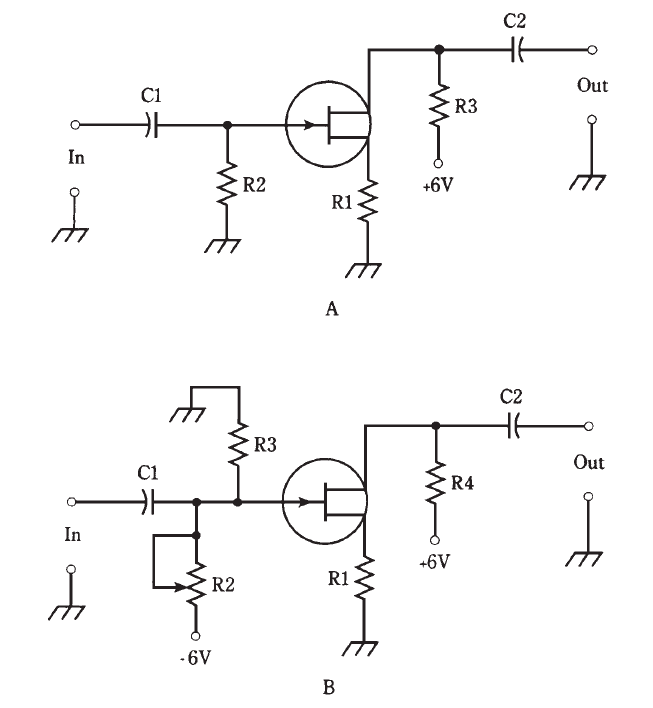
JFET biasing
 المؤلف:
Stan Gibilisco
المؤلف:
Stan Gibilisco
 المصدر:
Teach Yourself Electricity and Electronics
المصدر:
Teach Yourself Electricity and Electronics
 الجزء والصفحة:
419
الجزء والصفحة:
419
 12-5-2021
12-5-2021
 2699
2699
JFET biasing
Two biasing arrangements for an N-channel JFET are shown in Fig. 1. These hookups are similar to the way an NPN bipolar transistor is connected, except that the source-gate (SG) junction is not forward-biased.
At A, the gate is grounded through resistor R2. The source resistor, R1, limits the current through the JFET. The drain current, ID, flows through R3, producing a voltage across this resistor. The ac output signal passes through C2.
At B, the gate is connected to a voltage that is negative with respect to ground through potentiometer R2. Adjusting this potentiometer results in a variable negative EG between R2 and R3. Resistor R1 limits the current through the JFET. The drain current, ID, flows through R4, producing a voltage across it; the ac output signal passes through C2.
In both of these circuits, the drain is positive relative to ground. For a P-channel JFET, reverse the polarities in Fig. 1. The connections are somewhat similar to the way a PNP bipolar transistor is used, except the SG junction isn’t forward-biased.

Fig. 1: Two methods of biasing an N-channel JFET. At A, fixed gate bias; at B, variable gate bias.
Typical JFET power-supply voltages are comparable to those with bipolar transistors. The voltage between the source and drain, abbreviated ED, can range from about 3 V to 150 V; most often it is 6 V to 12 V.
The biasing arrangement in Fig. 1A is commonly used for weak-signal amplifiers, low-level amplifiers and oscillators. The scheme at B is more often employed in power amplifiers having a substantial input signal.
 الاكثر قراءة في الألكترونيات
الاكثر قراءة في الألكترونيات
 اخر الاخبار
اخر الاخبار
اخبار العتبة العباسية المقدسة


